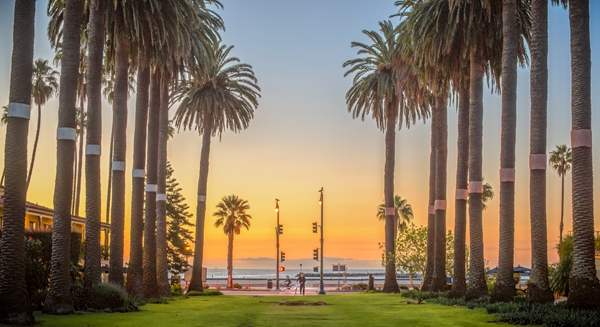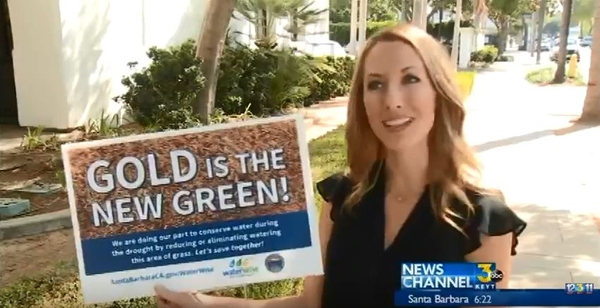
From beaches to canyons, southern California is well-known for its iconic landscapes. Palm-lined streets are so ingrained in the popular imagination that it's easy to forget the trees haven't been there all that long. In fact, much of what is commonly thought of as the area's natural beauty has been created to match a specific human idea of what nature should look like. However, a new study indicates that what many residents and visitors see as the ideal coastal landscape may have evolved during California's prolonged drought.
Andrew McCumber, a doctoral student in cultural and environmental sociology at UC Santa Barbara, published a study in the journal Nature + Culture on the interplay between drought and concepts of nature in the coastal city of Santa Barbara. While often thought of as a sort of paradise, Santa Barbara "is also the product of significant human interventions in its 'natural' landscape," says McCumber. He asserts the place we see today arose through a concerted effort to develop an idyllic semitropical beach town in what is an otherwise semiarid climate.
"When Santa Barbara is lauded for its natural beauty, part of what that means is the city's appearance fits a culturally preferred aesthetic," writes McCumber. The seeds of that aesthetic were planted at least as far back as the 19th century with the conversion of oak and sage woodlands to ranchlands, and furthered with the intentional 20th century introduction of hundreds of varieties of trees and plants from around the world. There are now over 450 kinds of trees in Santa Barbara, all of which contribute to a relatively lush urban forest considered central to the city's natural beauty.
As part of his study, McCumber, a lifelong resident of Santa Barbara, spoke with the city's arborist Timothy Downey and learned just how much work goes into maintaining the trees. "It's not surprising that the trees are managed, but because it's done to cultivate a specific experience of the city, you come to take it for granted. The true extent of the bureaucratic management of the city's aesthetics really intrigued me."
At the same time, McCumber's research found that the drought led to a shift in the city's preferred aesthetic. On one level, water restrictions simply meant less water for landscaping. More broadly, the very idea that a green urban forest is what makes Santa Barbara a paradise also changed, in part due to an active "gold is the new green" campaign.
Like many in California's coastal cities, Santa Barbara's residents generally pride themselves on their environmental values. While "green" is often used as a substitution for "environmental" the drought led to a rethinking of what those values really mean in a semiarid climate. Instead it became a "badge of honor to have a brown lawn" said the city's water conservation manager, Madeline Ward.
This shift in aesthetics had indirect effects on some in Santa Barbara. "For many middle- and upper-class residents who cared about the drought, the easiest thing to do initially was to let their landscaping go. The people most affected by that change were the largely Latino laborers in the landscaping industry who lost work when clients stopped watering," says McCumber. That doesn't mean the shift shouldn't happen, or that new landscaping opportunities won't emerge, but rather that "it's hard to disentangle these cultural, social, and environmental threads when there is a pre-established economy for maintaining an aesthetic that is ecologically out of touch."
McCumber hopes his research can help illuminate the complex relationship between aesthetics, environmental conditions, and people. In the time since he finished his research, two more disasters have hit the Santa Barbara area – a devastating wildfire and mudslide. McCumber says he is worried that in a few years people will talk about the fire and mudslide as separate events. "I think we should also include the drought when we're talking about these disasters. It's important to talk about all of them, and more broadly climate change, as parts of a larger socio-environmental process."

